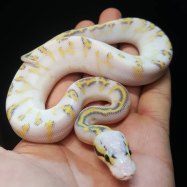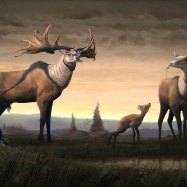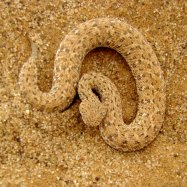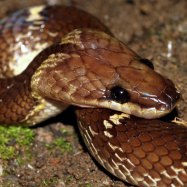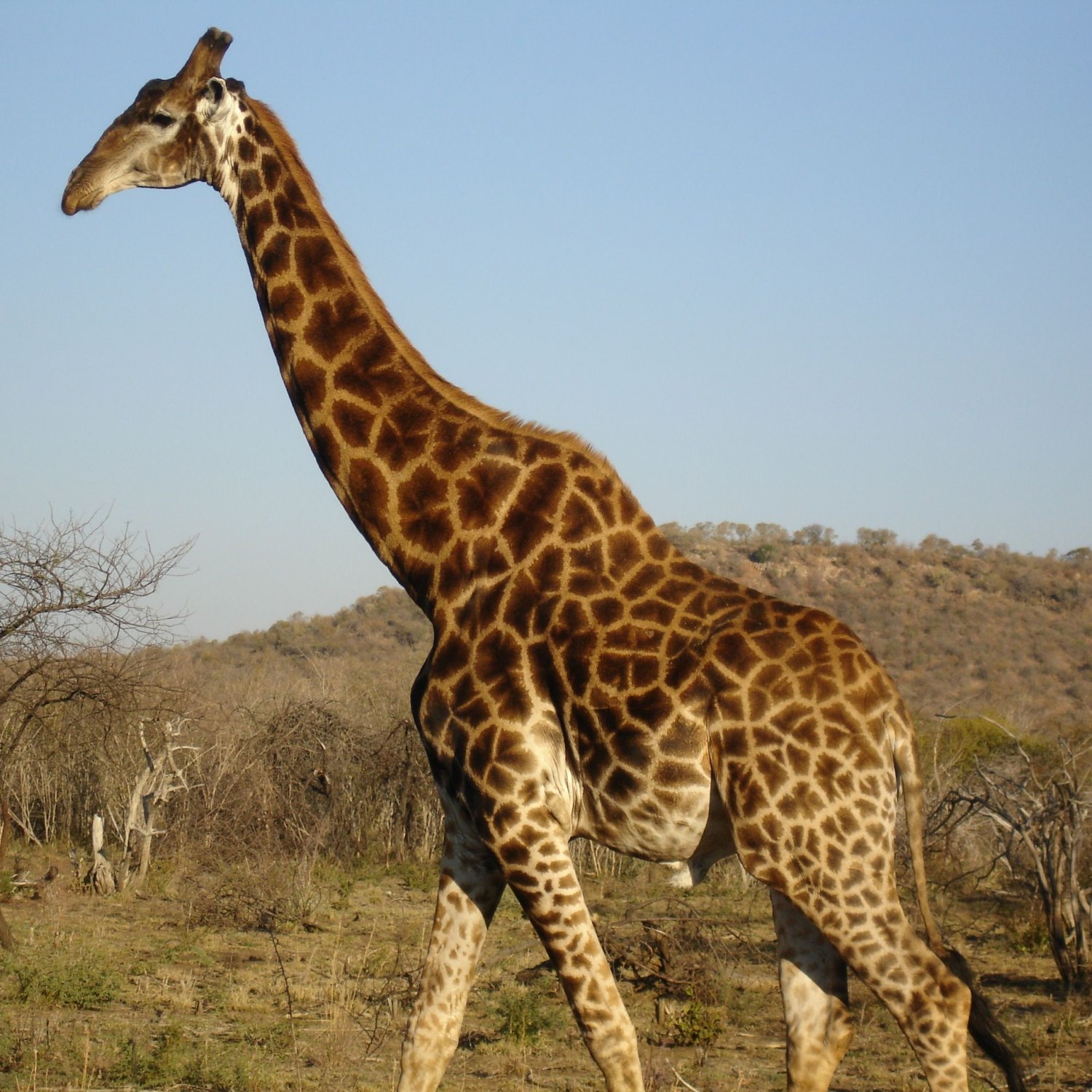
Giraffe
14 to 18 feet
Giraffes are magnificent animals found in the open grasslands of Africa. With an impressive height of 14 to 18 feet, they are the tallest land animals. Giraffes, belonging to the Giraffidae family, have a unique body shape that includes a long neck and legs. These gentle giants are truly a sight to behold in their natural habitat.
Animal Details Summary:
Common Name: Giraffe
Kingdom: Animalia
Habitat: Savannahs
Giraffes: The Tallest and Most Graceful Creatures of the African Savannah
The African savannah is famous for its diverse range of wildlife, and one of the most iconic animals found in this vast grassland is the Giraffe. These majestic creatures, known for their impressive height and long necks, have captured the imagination of people all over the world. Their distinctive appearance, unique behaviors, and vital role in the ecosystem make them a fascinating subject to study. In this article, we will delve into the world of Giraffes, exploring everything from their physical characteristics to their behavior and habitat Giraffe.Scientifically known as Giraffa camelopardalis, the Giraffe belongs to the Animal Kingdom, Phylum Chordata, and Class Mammalia. They are categorized under the order Artiodactyla, meaning even-toed hoofed animals, and are the only remaining species from the Giraffidae family.
Physical Characteristics
One look at a Giraffe is enough to leave anyone awestruck. These gentle giants are one of the tallest land animals in the world, with an average height of 14 to 18 feet. Their long necks can measure up to 6 feet, which is longer than the average human. But what appears to be an extraordinarily long neck is actually a result of their fused vertebrae, which provide them with stability and strength. Giraffes also have long legs, with their hind legs being longer than their front legs, allowing them to run at incredible speeds of up to 35 miles per hour.Giraffes have a distinctive coloration, with orange-brown patches covering a cream or white background. The patterns are unique to each individual and are similar to fingerprints in humans Green Snake. These markings also serve as a means of camouflage, helping them blend into the tall grass and tree branches. Interestingly, Giraffes have small horns on their heads, known as ossicones, which are covered with fur and are believed to be used in fighting and mating rituals.
Habitat and Geographical Distribution
Giraffes are native to Africa, with their geographical distribution ranging from Senegal in the west to Ethiopia in the east and down to South Africa. They can be found in various countries, including Kenya, Tanzania, Botswana, Namibia, and Zimbabwe. In these countries, Giraffes can be seen living in open grasslands, dense woodlands, and even arid regions. Their ability to survive in a range of habitats is a testament to their adaptability and resilience.In these diverse environments, Giraffes play a vital role in maintaining the balance of the ecosystem. Their diet consists mainly of the leaves and twigs of trees, which helps control the growth of these plants. Without Giraffes, these trees would grow out of control, depleting resources for smaller animals and ultimately disrupting the delicate balance of the savannah.
Feeding and Reproduction
Giraffes are herbivores, meaning they only eat plants. They have a specialized diet that enables them to reach leaves and fruits growing high up in trees. Their long necks and long tongues, which can measure up to 21 inches, allow them to reach branches and leaves that other animals cannot. They also have a unique digestive system, with four compartments in their stomach that allow them to break down tough plant fibers. Giraffes are known to eat up to 75 pounds of leaves in a single day, making them a vital part of the food chain.In terms of reproduction, female Giraffes, or cows, reach sexual maturity at around four years of age, while males, or bulls, reach maturity at around six years. When a male is ready to mate, he will court the female by sniffing her urine and neck. Once a female is pregnant, the gestation period is around 15 months, making it one of the longest pregnancies in the animal kingdom. After giving birth, the mother and calf will form a strong bond, with the calf staying close to its mother for the first few months of its life.
Threats and Conservation Efforts
Despite being a symbol of grace and endurance, Giraffes are facing numerous threats to their survival. The rapid increase in human population has resulted in habitat destruction, leaving Giraffes with smaller and fragmented areas to live in. This loss of habitat has also led to increased competition for resources, as well as human-wildlife conflict. Poaching for their meat, hides, and body parts used in traditional medicine is also a significant threat to Giraffes.According to the International Union for Conservation of Nature (IUCN), Giraffes are classified as "Vulnerable," with their population decreasing by almost 40% in the last three decades. To combat these threats, conservation efforts are underway, with organizations like the Giraffe Conservation Foundation working towards protecting Giraffes and their habitats. These efforts include anti-poaching patrols, habitat restoration, and raising awareness about the importance of these animals to the ecosystem.
The Complex Social Structure of Giraffes
Giraffes may seem like solitary creatures, but they actually have a complex social structure. They live in groups known as "towers," consisting of around 15 individuals. These towers usually consist of adult females and their young, as well as a dominant male in charge of protecting his group. However, both males and females can move between different groups, depending on environmental factors like food availability.Within these groups, Giraffes have a unique hierarchy. The dominant male, known as a bull, will lead the group, while females will form their own hierarchy. Giraffes are also known to exhibit cooperative behavior, with members of the group helping others reach food and keeping an eye out for predators. This social structure allows Giraffes to survive in the wild, with each member playing a crucial role.
The Fascinating World of Giraffes
Giraffes are truly amazing creatures, with a range of physical and behavioral adaptations that have allowed them to thrive in the African savannah. Their graceful movements, unique coloration, and essential role in the ecosystem make them one of the most captivating animals to observe. However, with threats to their survival increasing, it is crucial that we take action to protect these gentle giants and preserve their place in the wild.In conclusion, Giraffes are more than just tall animals with long necks. They are complex, highly adaptable creatures with a critical role in their ecosystem. Let us appreciate and admire these magnificent creatures for all their unique traits and continue to work towards their conservation and protection. As we learn more about them, we come to realize that the world would be a much duller place without Giraffes.

Giraffe
Animal Details Giraffe - Scientific Name: Giraffa camelopardalis
- Category: Animals G
- Scientific Name: Giraffa camelopardalis
- Common Name: Giraffe
- Kingdom: Animalia
- Phylum: Chordata
- Class: Mammalia
- Order: Artiodactyla
- Family: Giraffidae
- Habitat: Savannahs
- Feeding Method: Herbivore
- Geographical Distribution: Africa
- Country of Origin: Various countries in Africa
- Location: Open grasslands
- Animal Coloration: Orange-brown patches on a cream or white background
- Body Shape: Tall with a long neck and legs
- Length: 14 to 18 feet
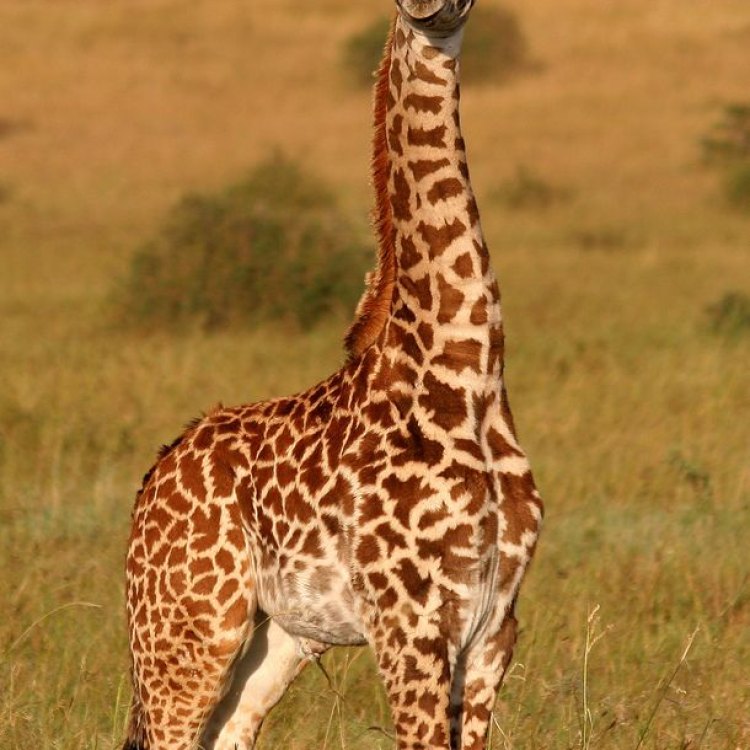
Giraffe
- Adult Size: 13 to 17 feet tall at the shoulders
- Average Lifespan: 25 years in the wild, up to 30 years in captivity
- Reproduction: Viviparous
- Reproductive Behavior: Mating occurs throughout the year with peaks in the rainy season
- Sound or Call: Low-pitched hums and grunts
- Migration Pattern: Non-migratory, but may travel long distances in search of food and water
- Social Groups: Herds
- Behavior: Gentle and non-aggressive
- Threats: Habitat loss, poaching, and human-wildlife conflict
- Conservation Status: Vulnerable
- Impact on Ecosystem: Important for seed dispersal and maintaining ecological balance in savannah ecosystems
- Human Use: Tourist attractions, hunting for sport, and products from body parts
- Distinctive Features: Long neck and legs, unique spotted coat pattern, and ossicones (horn-like structures)
- Interesting Facts: Giraffes are the tallest land mammals, they sleep less than two hours a day, and their tongues can be up to 18 inches long
- Predator: Lions and hyenas
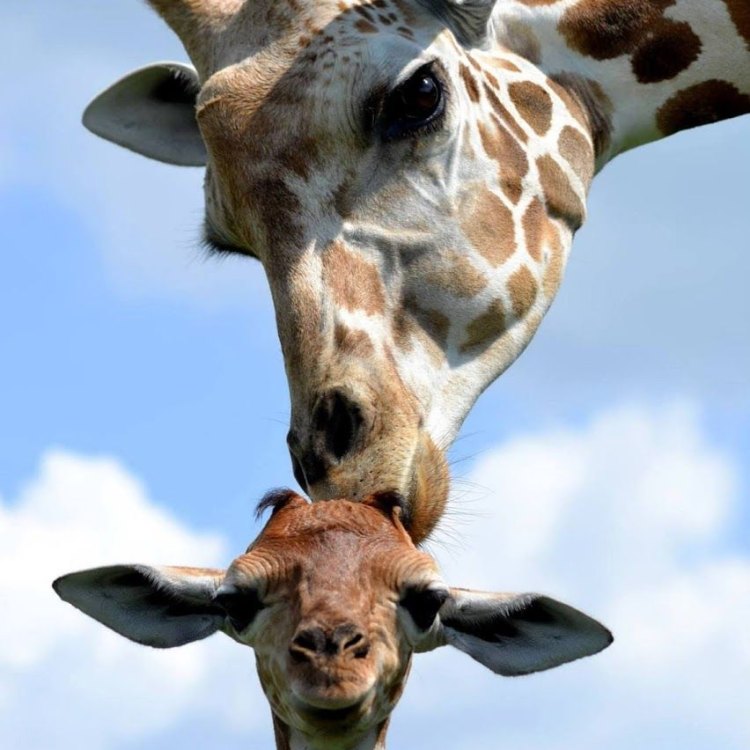
Giraffa camelopardalis
The Majestic Giraffe: A Closer Look at the Tallest Land Mammal
Standing tall in the African savannah, with their graceful long necks, spotted coats, and horn-like structures, giraffes are one of the most iconic and recognizable animals in the world. As the tallest land mammals, they command attention and awe from anyone who has the privilege of seeing them in their natural habitat.But beyond their striking appearance, giraffes possess many unique and fascinating characteristics that make them truly one of a kind. From their reproductive behavior to their role in the ecosystem, let's take a closer look at these gentle giants PeaceOfAnimals.Com.
Size and Lifespan
The first thing that comes to mind when thinking about giraffes is their impressive height. A fully grown adult giraffe can reach up to 13 to 17 feet tall at the shoulders, and their long necks alone can measure up to six feet in length. This incredible height allows them to reach leaves and branches from trees that other animals cannot, making them the ultimate browsers.Despite their considerable size, giraffes do not weigh as much as one might expect. On average, they weigh between 1,600 and 3,000 pounds, with males being slightly larger than females. They are also surprisingly fast, capable of reaching speeds of up to 35 miles per hour.
The lifespan of giraffes varies depending on whether they live in the wild or in captivity. In the wild, they can live up to 25 years, while in captivity, they can live up to 30 years. These numbers may seem low compared to other mammals, but it's worth noting that giraffes have a challenging life in the wild, where they face numerous threats Gerberian Shepsky.
Reproduction and Reproductive Behavior
Giraffes are viviparous, meaning they give birth to live young. The gestation period for giraffes is approximately 15 months, making it the longest of any land mammal. Female giraffes, called cows, give birth while standing, and their newborn calves can measure up to six feet tall. The calf quickly learns to stand and walk within an hour after birth, which is necessary to evade predators.Mating among giraffes occurs throughout the year, with peaks during the rainy season when food is more abundant. Male giraffes, called bulls, engage in a unique courtship ritual known as "necking," where they use their long necks to battle for dominance and mating rights. This behavior can also be seen in females, as they establish dominance within their social group.
Sound or Call
While giraffes are not known for their vocal abilities, they do produce low-pitched hums and grunts, which are used mainly for communication between individuals in their herd. These sounds are also used during the mating season, and mothers use them to communicate with their calves.Migration Pattern and Social Groups
Unlike many other African animals, giraffes are non-migratory. They prefer to stay in their home range and will only travel long distances if necessary to find food and water. However, they do have a fission-fusion social structure, meaning that they may split and combine into different groups throughout the day and night.Herds of giraffes can consist of up to 20 individuals and are led by a dominant male. The females and their calves form a strong bond, and they often remain together in one herd, while the males may move between different herds.
Behavior and Threats
One of the most notable traits of giraffes is their gentle and non-aggressive nature. They are peaceful animals and rarely engage in fights or aggressive behavior, except during the mating season. They spend most of their day browsing and grazing, and their long necks allow them to reach leaves and branches from trees that other herbivores cannot, giving them a competitive advantage for food.Sadly, giraffes' peaceful behavior does not protect them from the threats they face in the wild. Their population has declined significantly in recent years due to habitat loss, poaching for their meat and body parts, and conflict with humans. As human beings continue to encroach upon their natural habitat, giraffes are forced to compete for resources, often leading to conflict and loss of life.
Conservation Status and Impact on Ecosystem
According to the International Union for Conservation of Nature (IUCN), giraffes are listed as a vulnerable species. Their population has declined by more than 30% in the past 30 years, and there are currently less than 100,000 individuals in the wild. With their declining numbers, conservation efforts are crucial in ensuring the survival of these magnificent animals.Aside from their aesthetic value, giraffes play a vital role in the ecosystem. They act as ecosystem engineers by browsing on trees and shrubs, keeping vegetation in check and creating pathways for smaller animals to access food and water sources. They also play a crucial role in seed dispersal, which is essential for maintaining biodiversity in savannah ecosystems.
Human Use and Distinctive Features
Giraffes have been a subject of fascination for humans for centuries, and they have been used for various purposes, both positive and negative. In some African cultures, giraffes are viewed as a symbol of strength and grace and are revered. Tourists flock to African countries to catch a glimpse of these gentle giants in the wild, providing much-needed revenue for the local economies.However, on the other hand, giraffes have also been hunted for their meat, body parts, and for sport. Their tails are often used to make jewelry and fly swatters, while their hides are used for clothing and shoes. Their bones and horns are also sought after for medicinal purposes, despite there being no scientific evidence to support their use.
One of the most distinctive features of giraffes is, of course, their long necks and legs. These adaptations allow them to reach food that would otherwise be unattainable by other herbivores. They also have a unique spotted coat pattern, which is different for each individual, much like human fingerprints. Finally, their horns, called ossicones, are thought to have evolved to serve both as a protection against predators and as a way to attract mates during the breeding season.
Interesting Facts and Predators
As we've already mentioned, giraffes are the tallest land mammals, but did you know that they also possess some other interesting facts? For starters, giraffes sleep less than two hours a day, with most of their sleep occurring while standing. This is due to the risk of being attacked by predators while lying down.Another fascinating fact is that their tongues can reach up to 18 inches in length, allowing them to grip and pull leaves from trees. Their tongues are also blueish-purple in color, which helps protect them from sunburn while browsing in the hot African sun.
In the wild, giraffes' main predators are lions and hyenas, who often prey on young and weak individuals. However, their towering height and strong legs give them an advantage in detecting and avoiding predators.
In Conclusion
Giraffes are truly unique and remarkable creatures, with their impressive size, gentle nature, and distinctive features. As we continue to learn more about these majestic animals, it becomes clear that it is our responsibility to protect and conserve them for future generations to appreciate. Their decline in numbers is a sobering reminder of the impact humans can have on the natural world, and it's up to us to ensure that these gentle giants continue to roam the African savannah for many years to come.
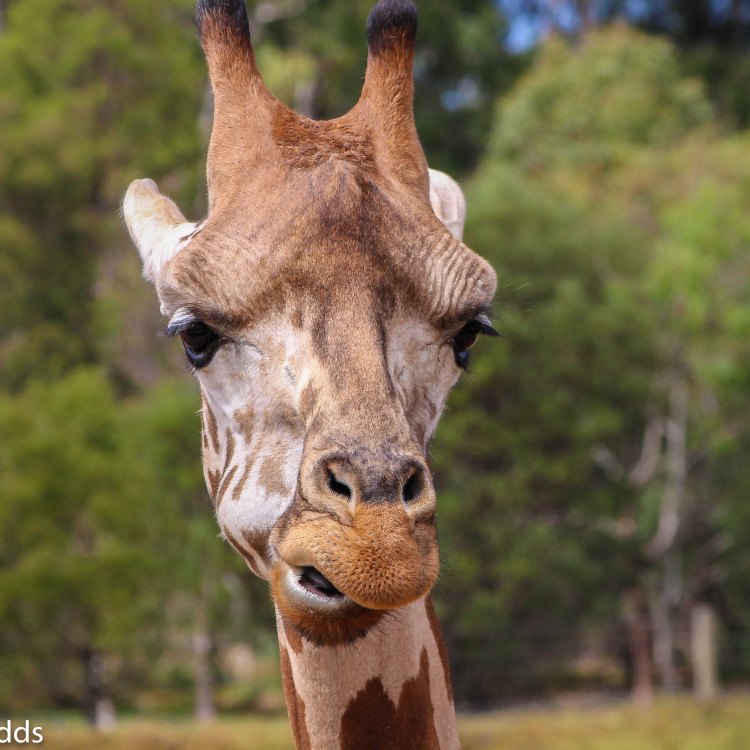
Giraffes: The Tallest and Most Graceful Creatures of the African Savannah
Disclaimer: The content provided is for informational purposes only. We cannot guarantee the accuracy of the information on this page 100%. All information provided here may change without prior notice.

